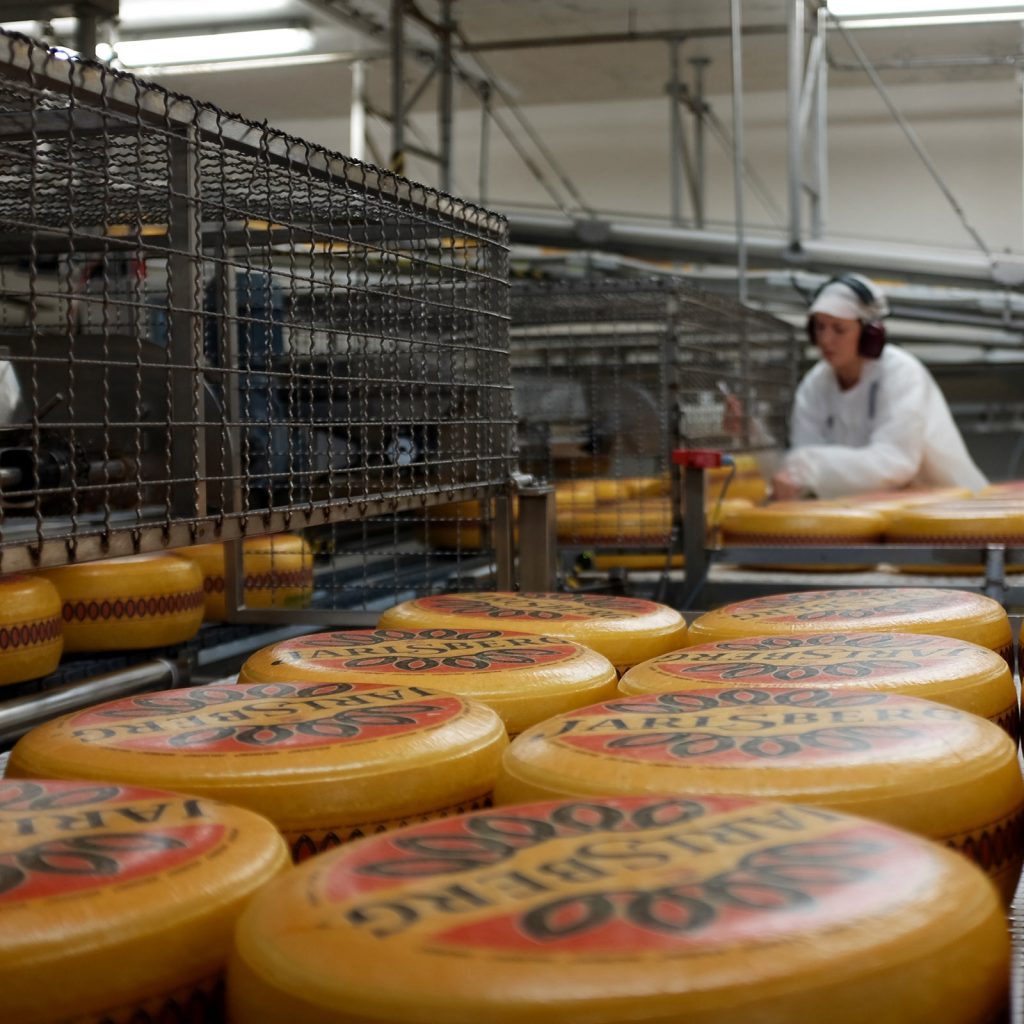Inside the Uniquely Norwegian Home of Jarlsberg Cheese
Where dedication to craft, ingredients and a well-kept secret recipe makes all the difference


Year after year, Norway consistently tops “Best of” lists in a wide variety of categories. From healthcare to education, the fjord-laden Nordic nation of just over five million people often scores top honors thanks to rich natural resources and a strong culture of inclusiveness and equality. When it comes to dairy products though, Norway is nowhere to be found. Despite the country’s rich soil and postcard-perfect farmland, Norway is decidedly in the quality over quantity camp when it comes to producing dairy and we recently visited the production facilities for the country’s most famous export: Jarlsberg cheese.

The average dairy herd in the United States is around 187 cows and it’s these larger farms where the majority of the country’s products come from. In Norway however, the average dairy farm is home to just 26 animals. The smaller average size of farm, coupled with Norway’s clean air and water (they top the list of cleanest countries), means animals roam in larger, purer pastures. And the proof is in the pudding or, in this case, a 22-pound wheel of cheese.

“The milk quality is always crucial, and it depends on what the cows eat,” explains Unni Sjøflot Export Director at Tine, the dairy cooperative that produces and exports Jarlsberg. Sjøfort says that Norway’s short summers contribute to the composition of the grass and in turn the milk. “The grass has to grow fast and this effects the nutrient content of the feed, which then ensures a really high milk quality.”

However the high quality of milk coming into the facility is just one component of what makes Jarlsberg the top specialty cheese in the US. Behind the doors of the dairy in Elnesvågen on the west coast of Norway, a team of dedicated cheesemakers is carrying on the Jarlsberg tradition. Following a closely guarded secret recipe that gives the Emmenthaler-style cheese its smooth, nutty taste and irregular holes, the facility balances modern efficiency with old-school care.

“It is in general difficult to make cheese with big holes,” adds Sjøfort. “It depends much of the skill and craftsmanship of the cheesemakers. For Jarlsberg’s sake it is also the secret recipe; invented in Norway and known to very few people.” So while the bulk of the production for Jarlsberg is mechanized, there’s still that dose of the handmade. A master cheesemaker closely monitors the size, shape and consistency of the cartoonish holes during the aging process.
The holes are actually the result of the unique blend of cultures used to control the ripening process. It’s here that Jarlsberg really holds onto its trade secrets. Their particular culture not only creates the holes, it also contributes to the cheese’s flavor and texture. As the cheese matures, the culture creates bubbles due to a mix of gases in a chemical reaction.

Cheesemakers tap the wheels and, based on feel and sound, are able to know when a wheel is ready to move onto the next stage of aging. It’s knowledge that comes only with experience—and a love for the product. It’s not uncommon for a cheesemaker to crack open a wheel in the factory for quality control. Upon ensuring the test wheel is up to snuff, the leftovers are promptly brought to the cafeteria where they’re devoured on rye toast.

Celebrating 60 years in business, Jarlsberg continues to modernize its production methods, while keeping the core components that made this cheese such a global favorite the same. Top quality milk comes in from farmers who receive a competitive price for their product. Cheesemakers ultimately make the call based on the human touch. And most importantly, that secret formula remains secret.
Images by Hans Aschim












